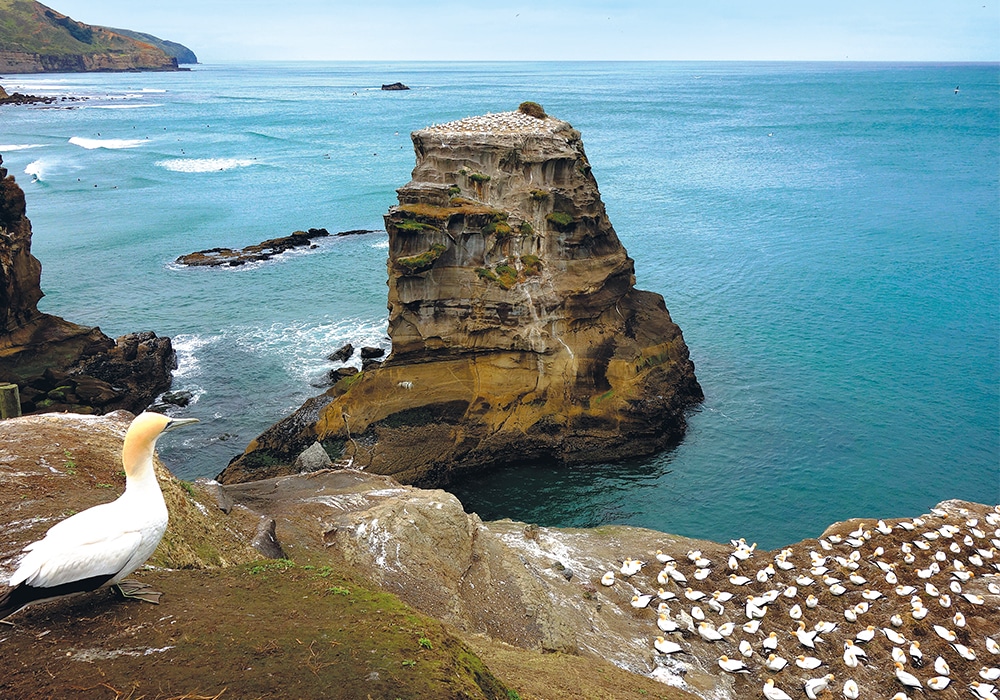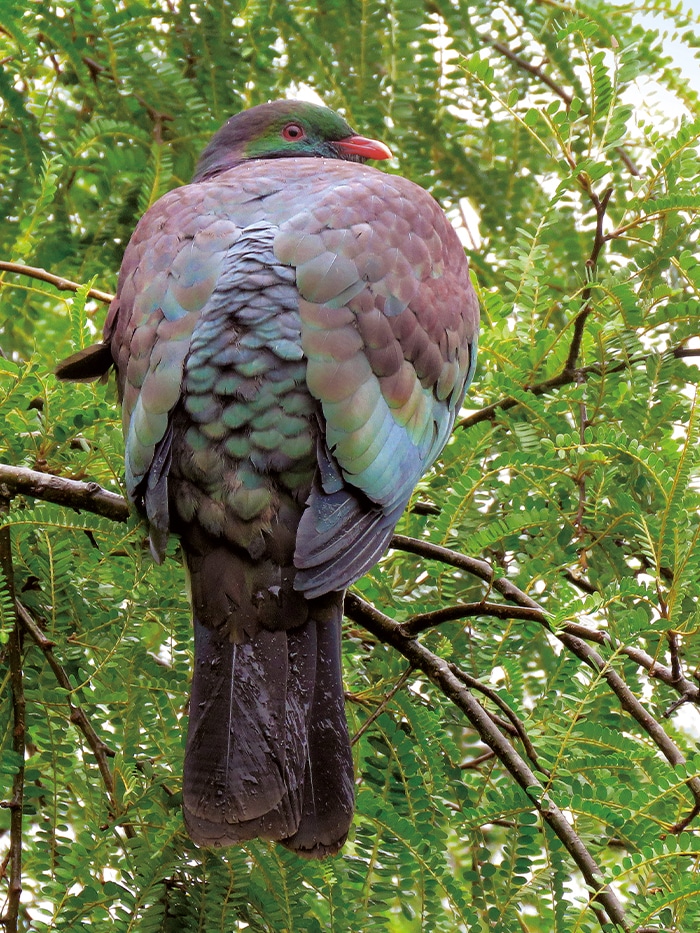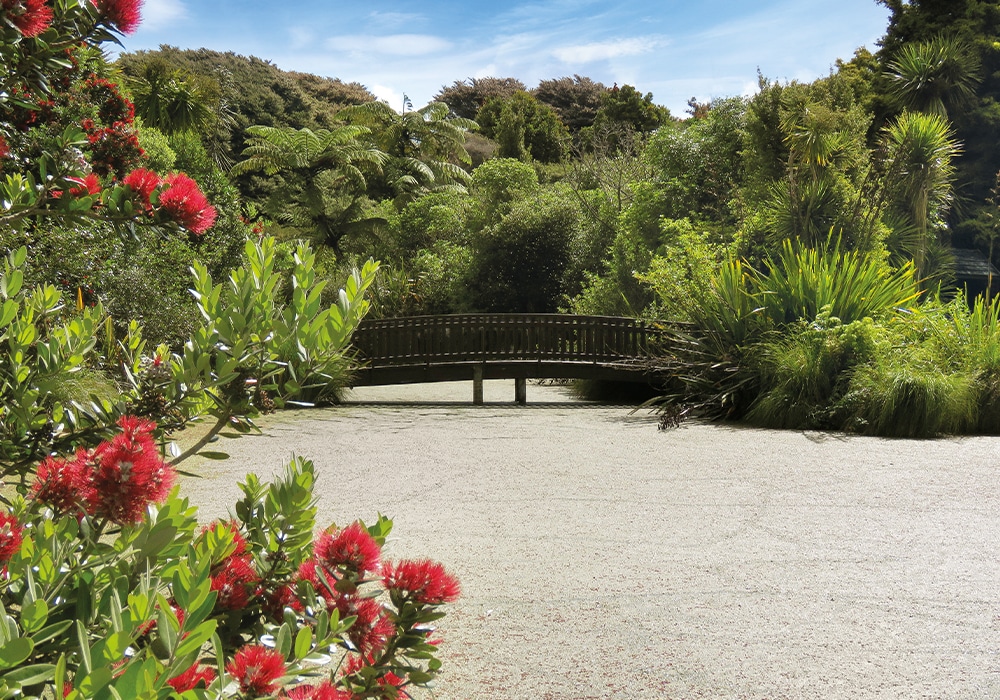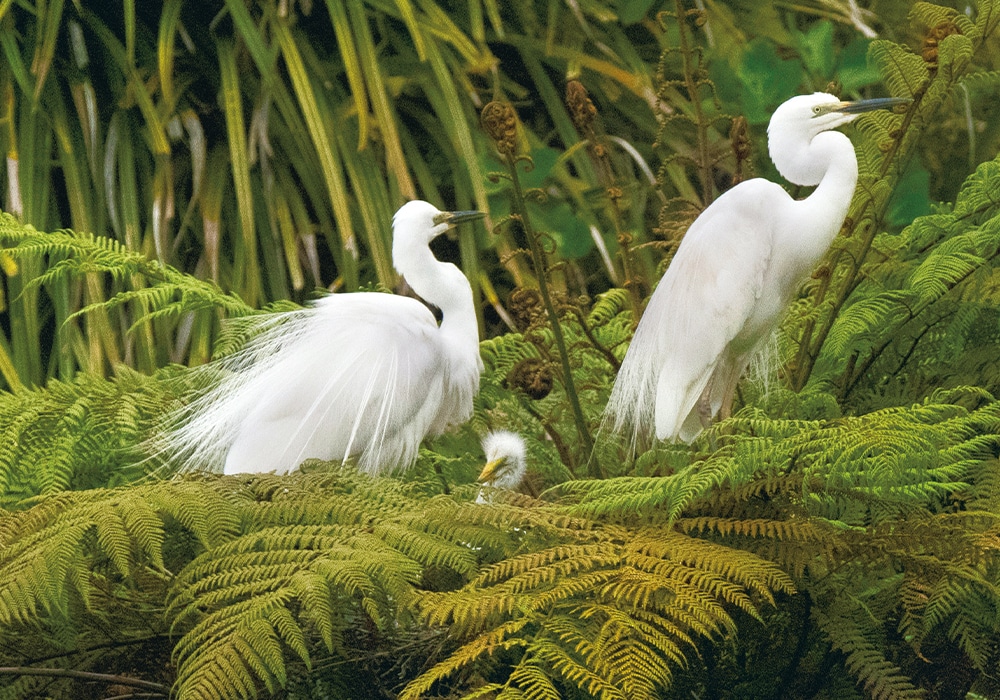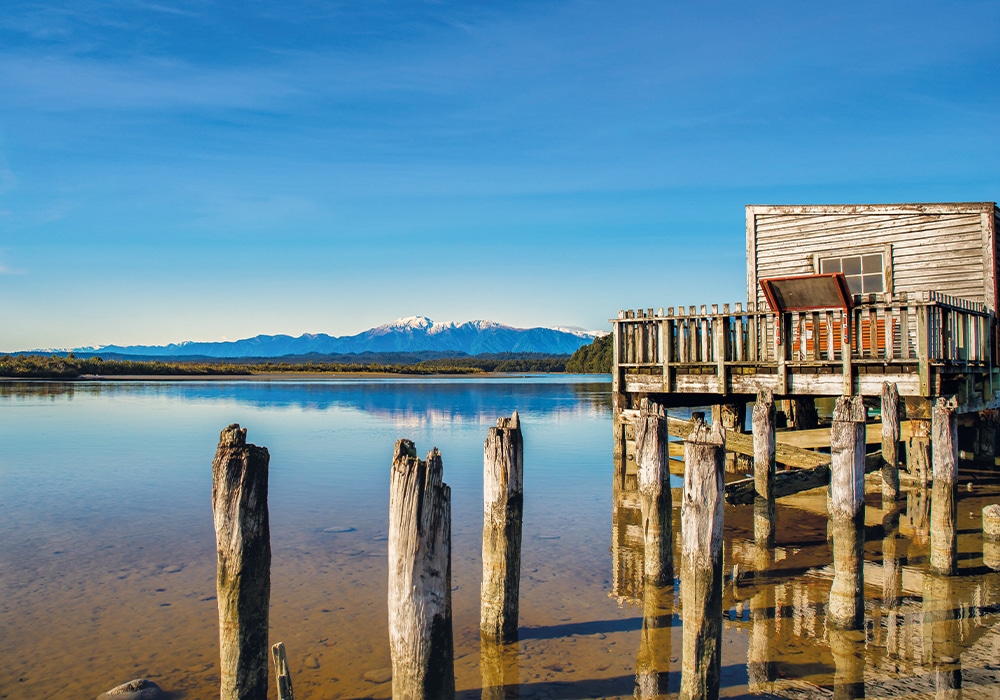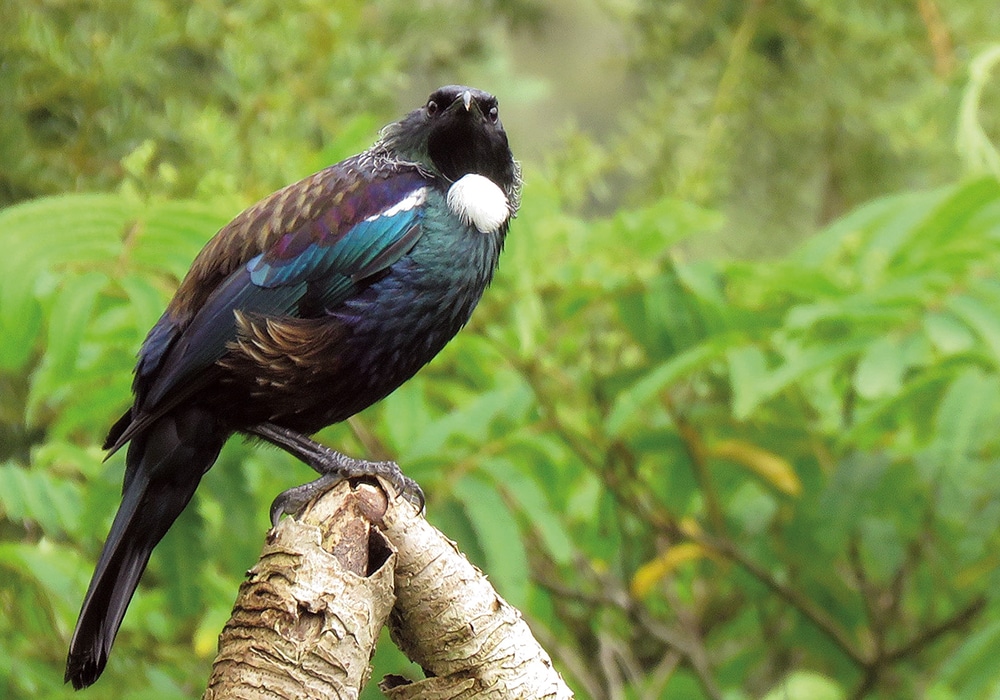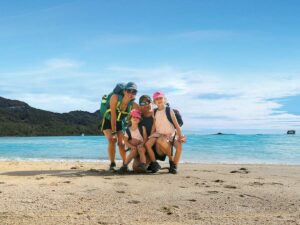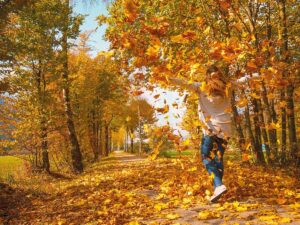Home to over 200 species of native birds, many of which are found nowhere else, New Zealand is the seabird capital of the world. Wendy Montrose finds some birdwatching spots to satisfy your twitch.
1. Auckland: Tāwharanui Open Sanctuary: Kiwi
Never seen a kiwi in the wild? Stay the night at Tāwharanui Campground and one may come to see you. Protected by a 2.5km predator-proof fence across Tāwharanui peninsula, the sanctuary is home to some our most precious bird species including takahē, pāteke, kākāriki, bellbirds, robins, kākā, whiteheads, tīeke (saddleback) and seabirds. It’s also one of a handful of places you can see kiwi in their natural habitat. Cover your torch with red cellophane and if you are very quiet you may hear North Island brown kiwi scratching around in the forest floor.
Get lucky and they’ll pop out on the track for you to see. Listen for their repetitive call and keep your eyes peeled for morepork (ruru) and weta out hunting. For obvious reasons, pets aren’t allowed and you need to book to stay at the campground. Charges apply. See more at tossi.org.nz
2. Auckland: Muriwai Beach: Gannets / Takapu
Auckland Airport can only wish to be as busy as Otakamiro Point. Sitting above Muriwai Beach, it’s a runway for the comings and goings of 1200 pairs of Australasian gannets or takapu. One of only three mainland colonies, this site is less than an hour’s drive from the centre of Auckland and also the most accessible. Arriving from eastern and southern Australia from July to October, the birds ritualised displays as they reconnect with their lifelong mates make entertaining viewing. Chicks start arriving in time for Christmas and then the action really heats up with mum and dad making death defying dives for food all along the coast.
It’s a multi sensory experience so be prepared for the smell and noise that will greet you first in a favourable wind. In autumn, they all head back to Australia, even the new generation, and peace once again returns to the point.
3. Firth Of Thames: Pūkorokoro Miranda Shorebird Centre
The shell banks of the Firth of Thames are a shore bird mecca. They come from all over New Zealand and the world to breed and feed and for some much needed R‘n’R in the sheltered shallow waters. A visit to the Pūkorokoro Miranda Shorebird Centre to hone up on your bird identification is a must before heading 2km down the road to the hides to view them. The best time for viewing is within two hours of high tide. Once the tide drops, they go further out on the mudflats. The variety is stunning with over 43 wader species sighted including, from September to March, the Arctic migrants. South Islanders come north for autumn and winter and there are resident populations of a number of others, including the shy Mātuku – Bittern. For more information and the tide times, visit shorebirds.org.nz
4. Rotorua: Kaharoa Conservation Area: Kōkako
The bird that graces our $50 note, kokako is a recovering treasure, thanks to the pest control work of groups like the Kaharoa Kōkako Trust. Just 36km north of Rotorua, the carpark on KapuKapu Road boasts a public shelter with interpretation panels on kokako and the area. Kokako Track, (aka Hollow Track) meanders 1.2km through beautiful bush down to Onaia Stream. DOC calls it an advanced track, you’ll need moderate fitness and a good pair of boots. Take a picnic and enjoy the peace. Early morning is the best time to visit to catch kokako song. If you’re up before the sun, you’ll even get the benefit of a full immersion dawn chorus. The grey ghost is elusive, heard more often than seen and his song is haunting, speaking right to your soul. Be prepared for a life-changing experience. More information including an audio clip at kokako.org.nz and doc.govt.nz
5. Waikanae: Ngā Manu Nature Reserve
A lowland swamp has never looked so appealing or been more accessible than the beautiful Ngā Manu Nature Reserve at Waikanae on the Kapiti Coast. Mostly flat with picnic tables and seats scattered about, this is truly a place to relax and enjoy the antics of tui, kereru and numerous piwakawaka/fantails. As a partner in breed-for-release programmes, the Ngā Manu Trust gives at risk species like kiwi, whio/blue duck and pateke/ brown teal a boost and a better chance at survival. They are also a native bird rehabilitation centre, treating and releasing back into the wild, sick and injured birds brought in by the local community. You never know wh might be in residence. Join a feed out tour or a kiwi night encounter. Open 10am to 5pm daily. Charges apply. For more information visit ngamanu.org.nz
6. West Coast: Ōkārito Lagoon
If the West Coast is nature on steroids, Ōkārito Lagoon is the unplugged version. This serene stretch of water is visited by more than 70 species of birds including kōtuku/white heron and royal spoonbills. Three easy walks, from 20 minutes to three hours in length take you to a variety of viewpoints overlooking the lagoon.
Allow plenty of time to stop often to take photographs. If you want to get up close and personal with the birds, pack your kayak for a leisurely paddle or hire one for a guided or unguided tour. More information at doc.govt.nz
7. West Coast: Jackson Bay Hapuka Estuary
In spring, when the kowhai trees are dripping gold, take a stroll along the raised boardwalk with your camera. Just off the Haast-Jackson Bay Road, Hapuka Estuary positively teems with tuī, korimako/ bellbird and kererū/wood pigeon all feasting on the flowers and arguing over whose is whose. A visual and aural feast, it’ll take longer than the 20 minute walk time. You’ll want to stop often and enjoy the antics of these cheeky birds. Rātā flowers see a resumption of hostilities between our nectar lovers in early autumn. More information at doc.govt.nz
8. Moeraki: Katiki Point Lighthouse: Penguins
It seems appropriate that hoiho, the yellow eyed penguin, shares a place on our $5 note with Sir Edmund Hillary. They are both exceptional climbers. Katiki Point is the most significant breeding site for hoiho in North Otago but you still have to keep your eyes peeled. They’re sneaky little blighters and will tip toe past you only to stop your heart with an earth shattering call right behind you. Late in the day is the best time to see them returning from sea for the night. Watch them creep past the seals on the beach and climb the impossibly steep cliff face. Do they have springs in their little legs? The track has been closed for maintenance but reopened on the
1st of September. More information at doc.govt.nz

